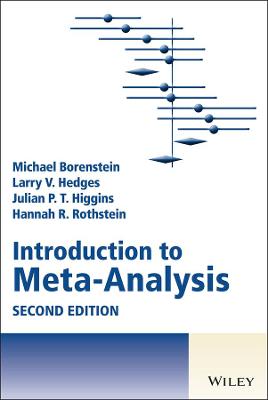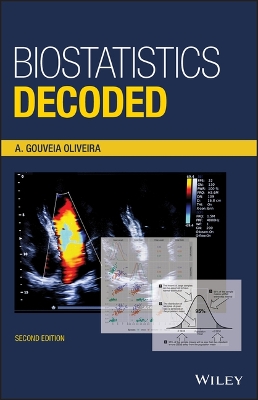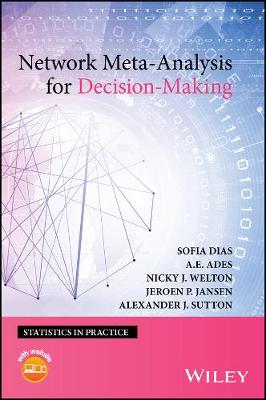Introduction to Meta-Analysis
 -15%
portes grátis
-15%
portes grátis
Introduction to Meta-Analysis
Hedges, Larry V.; Higgins, Julian P. T.; Borenstein, Michael; Rothstein, Hannah R.
John Wiley & Sons Inc
05/2021
544
Dura
Inglês
9781119558354
15 a 20 dias
1176
List of Figures xix
Acknowledgements xxv
Preface xxvii
Preface to the Second Edition xxxv
Website xxxvii
Part 1: Introduction
1 How a Meta-Analysis Works 3
2 Why Perform a Meta-Analysis 9
Part 2: Effect Size and Precision
3 Overview 17
4 Effect Sizes Based On Means 21
5 Effect Sizes Based On Binary Data (2 x 2 Tables) 33
6 Effect Sizes Based On Correlations 39
7 Converting Among Effect Sizes 43
8 Factors That Affect Precision 49
9 Concluding Remarks 55
Part 3: Fixed-Effect Versus Random-Effects Models
10 Overview 59
11 Fixed-Effect Model 61
12 Random-Effects Model 65
13 Fixed-Effect Versus Random-Effects Models 71
14 Worked Examples (Part 1) 81
Part 4: Heterogeneity
15 Overview 97
16 Identifying and Quantifying Heterogeneity 99
17 Prediction Intervals 119
18 Worked Examples (Part 2) 127
19 An Intuitive Look At Heterogeneity 139
20 Classifying Heterogeneity As Low, Moderate, Or High 155
Part 5: Explaining Heterogeneity
21 Subgroup Analyses 161
22 Meta-Regression 197
23 Notes On Subgroup Analyses and Meta-Regression 213
Part 6: Putting It All In Context
24 Looking At the Whole Picture 223
25 Limitations of the Random-Effects Model 233
26 Knapp-Hartung Adjustment 243
Part 7: Complex Data Structures
27 Overview 253
28 Independent Subgroups Within a Study 255
29 Multiple Outcomes or Time-Points Within A Study 263
30 Multiple Comparisons Within a Study 277
31 Notes On Complex Data Structures 281
Part 8: Other Issues
32 Overview 287
33 Vote Counting - A New Name For An Old Problem 289
34 Power Analysis For Meta-Analysis 295
35 Publication Bias 313
Part 9: Issues Related To Effect Size
36 Overview 335
37 Effect Sizes Rather Than P-Values 337
38 Simpson's Paradox 343
39 Generality of the Basic Inverse-Variance Method 349
Part 10: Further Methods
40 Overview 361
41 Meta-Analysis Methods Based On Direction and P-Values 363
42 Further Methods For Dichotomous Data 369
43 Psychometric Meta-Analysis 377
Part 11: Meta-Analysis In Context
44 Overview 391
45 When Does It Make Sense To Perform a Meta-Analysis? 393
46 Reporting The Results of a Meta-Analysis 401
47 Cumulative Meta-Analysis 407
48 Criticisms of Meta-Analysis 413
49 Comprehensive Meta-Analysis Software 425
50 How To Explain the Results of An Analysis 443
Part 12: Resources
51 Software For Meta-Analysis 471
52 Web Sites, Societies, Journals, and Books 473
Web sites 473
Professional societies 476
Journals 476
Special issues dedicated to meta-analysis 477
Books on systematic review methods and meta-analysis 477
References 479
Index 491
List of Figures xix
Acknowledgements xxv
Preface xxvii
Preface to the Second Edition xxxv
Website xxxvii
Part 1: Introduction
1 How a Meta-Analysis Works 3
2 Why Perform a Meta-Analysis 9
Part 2: Effect Size and Precision
3 Overview 17
4 Effect Sizes Based On Means 21
5 Effect Sizes Based On Binary Data (2 x 2 Tables) 33
6 Effect Sizes Based On Correlations 39
7 Converting Among Effect Sizes 43
8 Factors That Affect Precision 49
9 Concluding Remarks 55
Part 3: Fixed-Effect Versus Random-Effects Models
10 Overview 59
11 Fixed-Effect Model 61
12 Random-Effects Model 65
13 Fixed-Effect Versus Random-Effects Models 71
14 Worked Examples (Part 1) 81
Part 4: Heterogeneity
15 Overview 97
16 Identifying and Quantifying Heterogeneity 99
17 Prediction Intervals 119
18 Worked Examples (Part 2) 127
19 An Intuitive Look At Heterogeneity 139
20 Classifying Heterogeneity As Low, Moderate, Or High 155
Part 5: Explaining Heterogeneity
21 Subgroup Analyses 161
22 Meta-Regression 197
23 Notes On Subgroup Analyses and Meta-Regression 213
Part 6: Putting It All In Context
24 Looking At the Whole Picture 223
25 Limitations of the Random-Effects Model 233
26 Knapp-Hartung Adjustment 243
Part 7: Complex Data Structures
27 Overview 253
28 Independent Subgroups Within a Study 255
29 Multiple Outcomes or Time-Points Within A Study 263
30 Multiple Comparisons Within a Study 277
31 Notes On Complex Data Structures 281
Part 8: Other Issues
32 Overview 287
33 Vote Counting - A New Name For An Old Problem 289
34 Power Analysis For Meta-Analysis 295
35 Publication Bias 313
Part 9: Issues Related To Effect Size
36 Overview 335
37 Effect Sizes Rather Than P-Values 337
38 Simpson's Paradox 343
39 Generality of the Basic Inverse-Variance Method 349
Part 10: Further Methods
40 Overview 361
41 Meta-Analysis Methods Based On Direction and P-Values 363
42 Further Methods For Dichotomous Data 369
43 Psychometric Meta-Analysis 377
Part 11: Meta-Analysis In Context
44 Overview 391
45 When Does It Make Sense To Perform a Meta-Analysis? 393
46 Reporting The Results of a Meta-Analysis 401
47 Cumulative Meta-Analysis 407
48 Criticisms of Meta-Analysis 413
49 Comprehensive Meta-Analysis Software 425
50 How To Explain the Results of An Analysis 443
Part 12: Resources
51 Software For Meta-Analysis 471
52 Web Sites, Societies, Journals, and Books 473
Web sites 473
Professional societies 476
Journals 476
Special issues dedicated to meta-analysis 477
Books on systematic review methods and meta-analysis 477
References 479
Index 491













